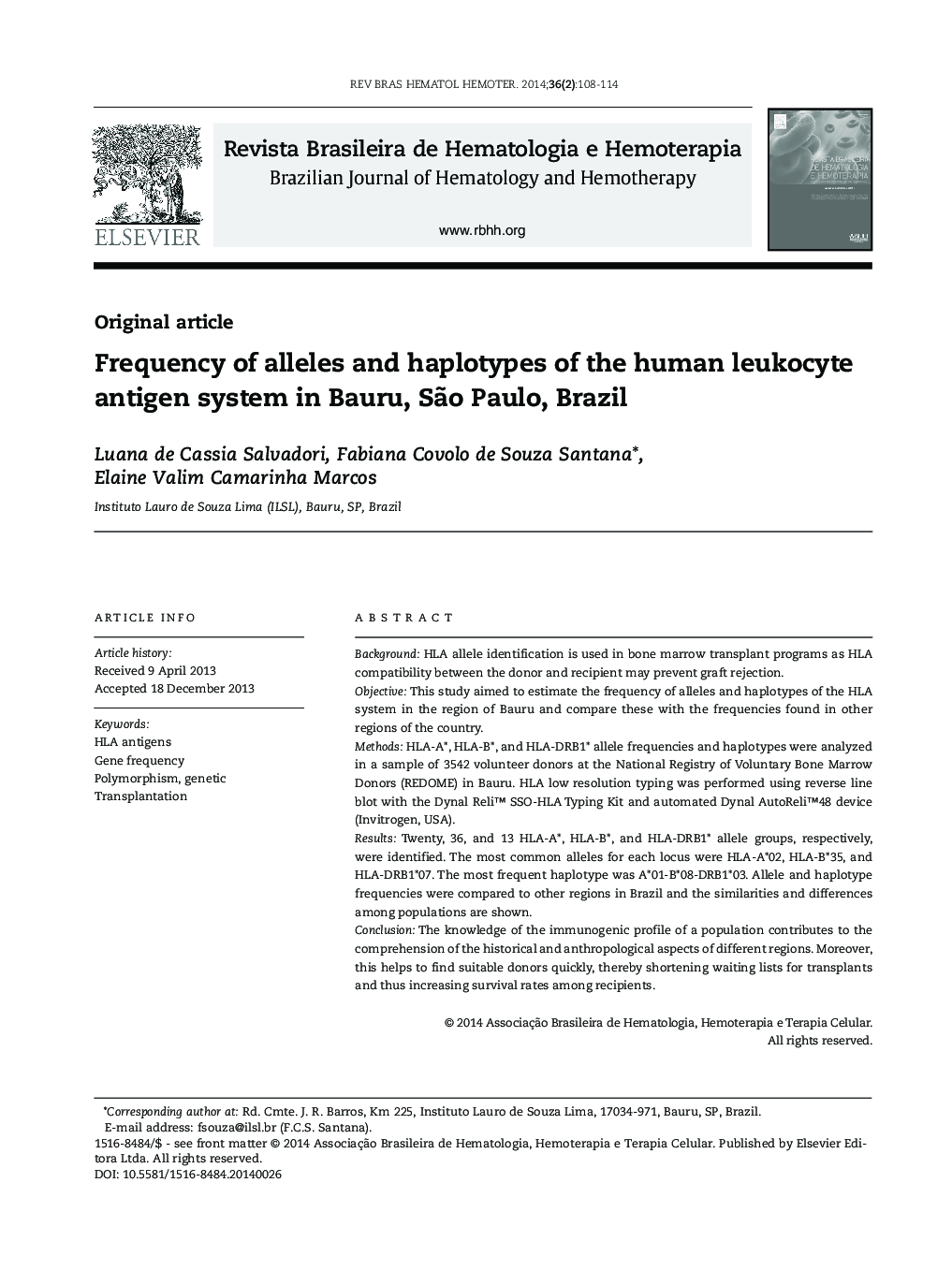| Article ID | Journal | Published Year | Pages | File Type |
|---|---|---|---|---|
| 3333151 | Revista Brasileira de Hematologia e Hemoterapia | 2014 | 7 Pages |
ABSTRACTBackgroundHLA allele identification is used in bone marrow transplant programs as HLA compatibility between the donor and recipient may prevent graft rejection.ObjectiveThis study aimed to estimate the frequency of alleles and haplotypes of the HLA system in the region of Bauru and compare these with the frequencies found in other regions of the country.MethodsHLA-A*, HLA-B*, and HLA-DRB1* allele frequencies and haplotypes were analyzed in a sample of 3542 volunteer donors at the National Registry of Voluntary Bone Marrow Donors (REDOME) in Bauru. HLA low resolution typing was performed using reverse line blot with the Dynal Reli™ SSO-HLA Typing Kit and automated Dynal AutoReli™48 device (Invitrogen, USA).ResultsTwenty, 36, and 13 HLA-A*, HLA-B*, and HLA-DRB1* allele groups, respectively, were identified. The most common alleles for each locus were HLA-A*02, HLA-B*35, and HLA-DRB1*07. The most frequent haplotype was A*01-B*08-DRB1*03. Allele and haplotype frequencies were compared to other regions in Brazil and the similarities and differences among populations are shown.ConclusionThe knowledge of the immunogenic profile of a population contributes to the comprehension of the historical and anthropological aspects of different regions. Moreover, this helps to find suitable donors quickly, thereby shortening waiting lists for transplants and thus increasing survival rates among recipients.
